Last Updated
Effects Of Navy Has Reduced Year On Year As Equipment Struggles With Conditions
The Mexican Navy has admitted that its efforts to contain the sargassum problem in the Mexican Caribbean are several under-performing. Problems with equipment have been cited as the greatest barrier to success.
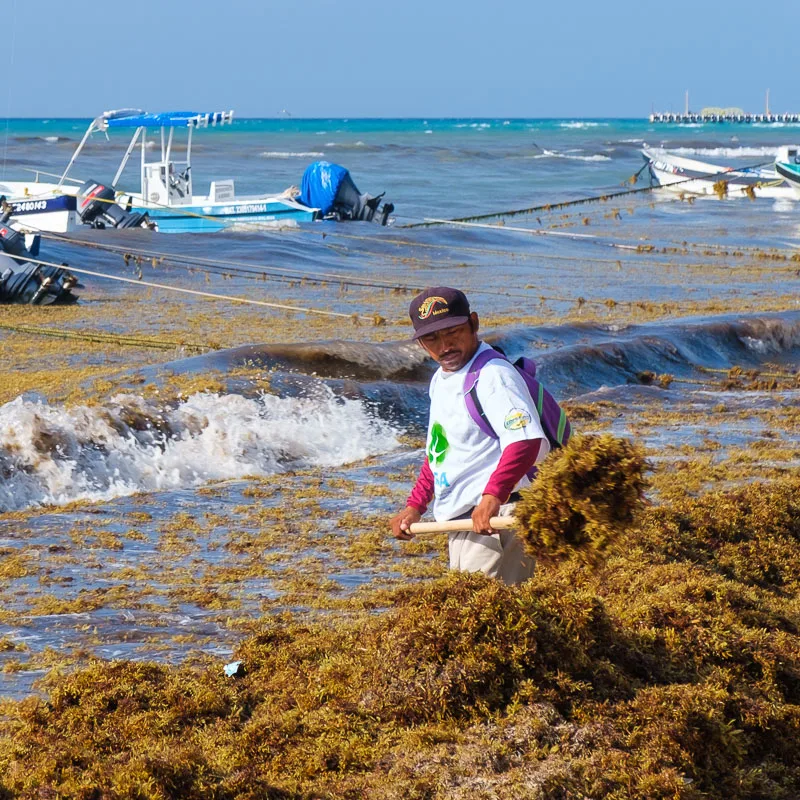
On Wednesday, Jose Ojeda, the Mexican Navy Secretary, openly stated that the sargassum had gotten far ahead of any efforts to prevent it from reaching the shore. Calling the issue “atypical,” he admitted that the ships and equipment used to collect the seaweed have severely underperformed due to limitations.
He stated, “We are definitely trying to prevent it from reaching the beaches, but sometimes it is complicated because of the tides or bad weather. We cannot take the boats out, they have very little of what we call freeboard and it is risky to take them out.”
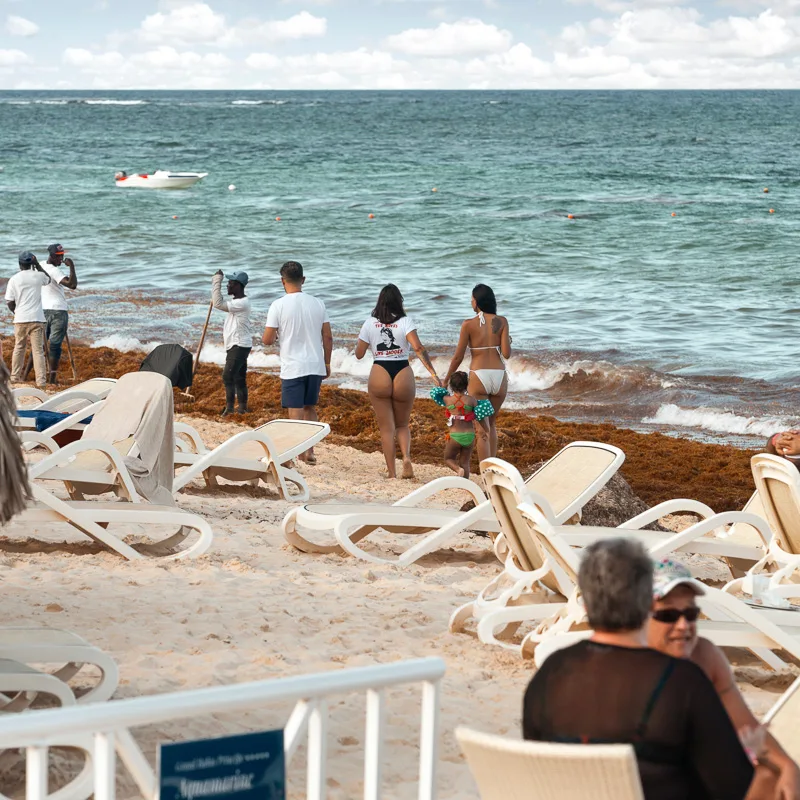
The freeboard he references is the space between the boat’s edge and where the waterline sits in comparison. On even moderately wavy days, water can often end up in the ship making it complicated to do the job required.
The Navy currently has eleven of these types of boats patrolling the Mexican Caribbean coast and fifteen other variations of ships designed to help place barriers. The largest of these ships is designed to take large masses of seaweed from much deeper at sea.
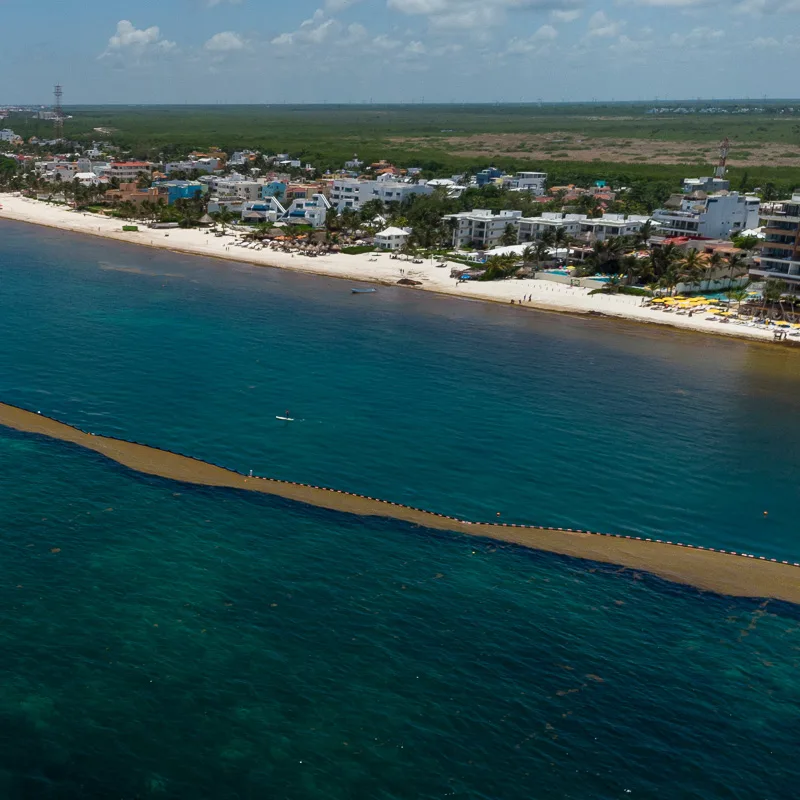
The effects of the Navy have deteriorated on a yearly basis as the sargassum problem grows. Even in 2020, the Navy could only collect around 4% of the sargassum on the coast. The following year the figure dropped to 3%, and as of April this year, only 1% has been collected. The rest has been left to those on the shore to rake up. This could be done by private establishments like hotels and restaurants, as well as other governmental programs.
“Yes, there has been more than in past years; it has gotten beyond us,” Ojeda stated. “We are aware that it is affecting tourism in some places, some beaches.”
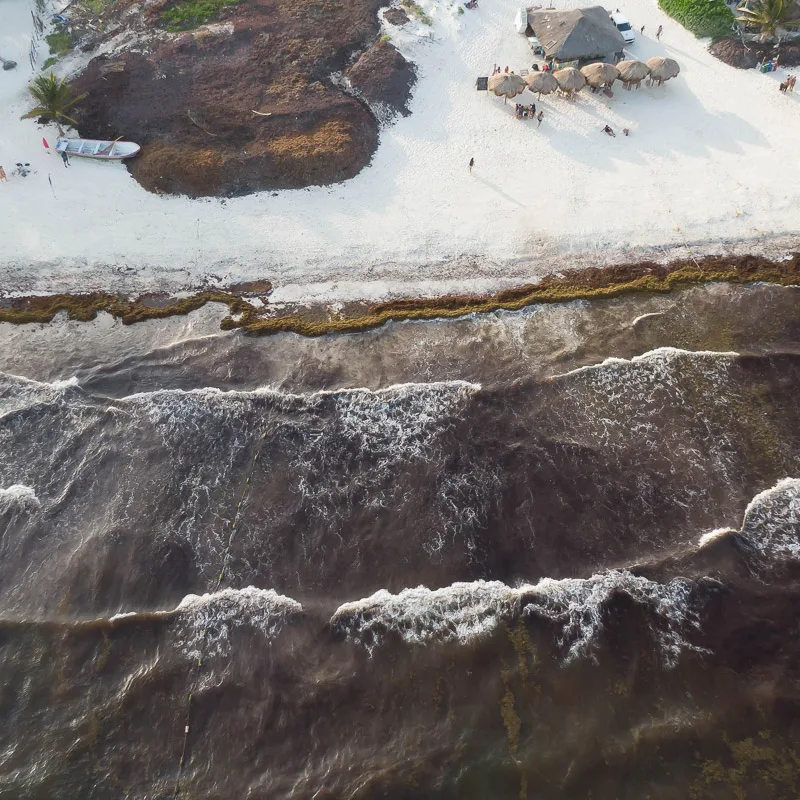
Even the barriers that have been placed in strategic positions along the coast have failed in many cases. Poor weather slowed the installation in many of the region’s most popular beach resorts, leaving the typically pristine sand and crystal waters undefended against the masses of brown algae.
Drastic measures have been considered to help stop the problem, including the potential installation of a sixty-kilometer sea barrier between Cozumel and the mainland that would funnel the sargassum back out to sea instead of along the beaches. The estimated cost of such a project would be around $90 million. Despite its cost, the project has a lot of support, highlighting the seaweed’s burden on many businesses.
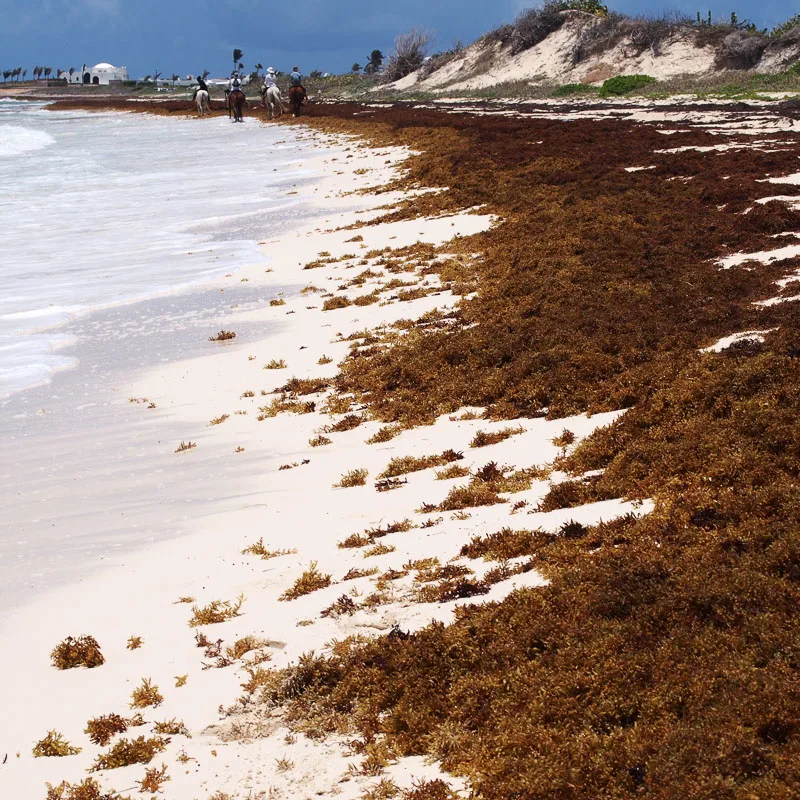
The sargassum itself isn’t a typical form of seaweed. The macroalgae forms in the Atlantic Ocean, just North East of Brazil, creating giant tangled masses not dissimilar to islands. Some of these knots of seaweed can be as long as five kilometers. Its growth has been attributed to rising sea temperatures and potential pollution from Brazil.
In the ocean, the sargassum is massively beneficial. It provides vital nutrients and transforms into its own ecosystem for smaller sea creatures. But as it hits the coastline, the problems for the tourist industry multiply quickly.
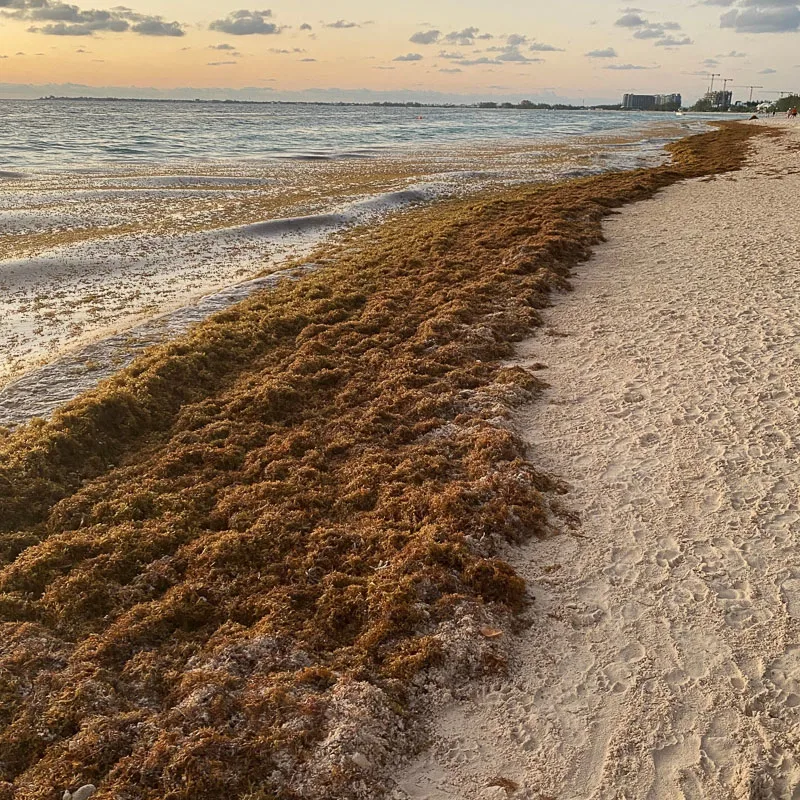
The unsightly brown appearance of the seaweed clouds the usually clear water and then blankets the sand in it. It begins to rot once it hits land, producing an unpleasant sulfur-like smell that drives tourists away from the main hot spots.
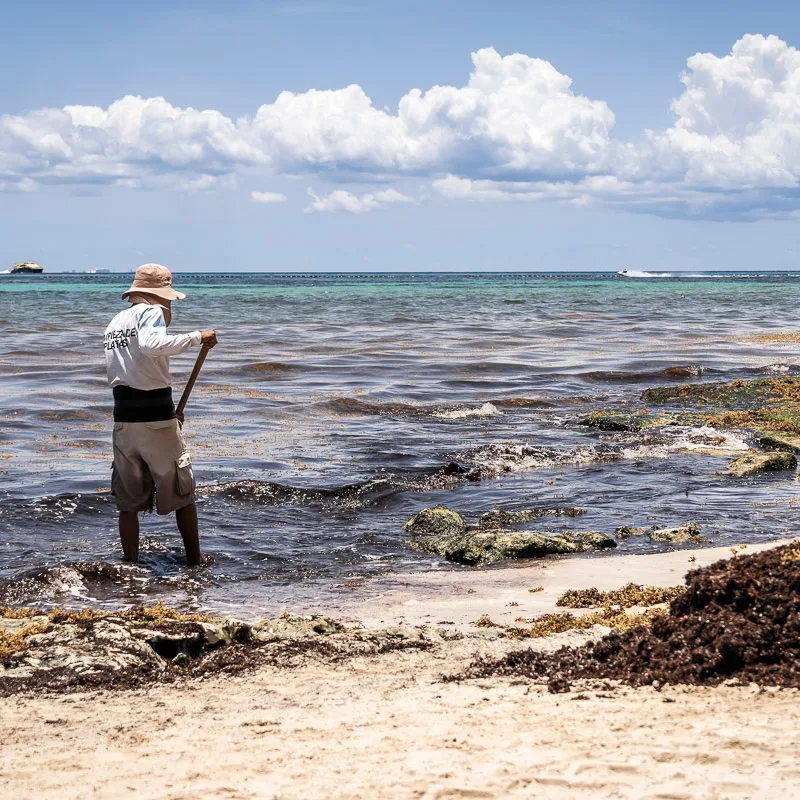
Businesses have poured money into preventing the seaweed from ruining tourists’ vacations. By building their own barriers and hiring new staff to clear the beaches by hand in the early hours of the morning, hotels have been eating into their profits. These losses are expected to be passed onto the guest in the form of rising room rates over the coming months.
Plan Your Next Cancun Vacation:
Traveler Alert: Don’t Forget Travel Insurance For Your Next Trip!
Choose From Thousands of Cancun and Riviera Maya Hotels, Resorts and Hostels with Free Cancellation On Most Properties
↓ Join the community ↓
The Cancun Sun Community FB group has all the latest travel news, conversations and tourism Q&A’s for the Mexican Caribbean

Subscribe to our Latest Posts
Enter your email address to subscribe to The Cancun Sun’s latest breaking news affecting travelers, straight to your inbox.
